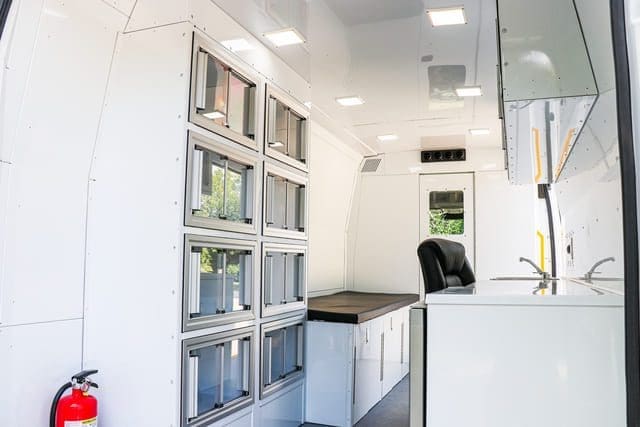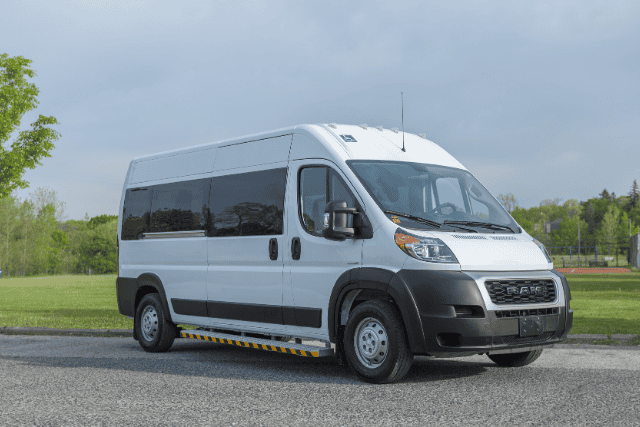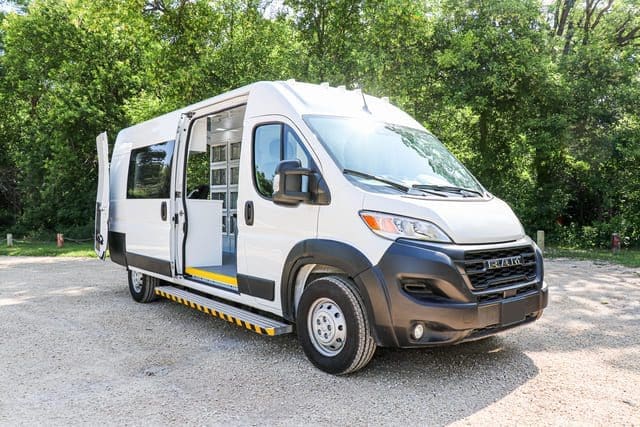Over 1,400 federally qualified healthcare centers (FQHCs) serve as lifelines for underserved populations in the U.S.—but they’re struggling. In rural areas, patients endure hours-long drives for basic care. In cities, lack of transportation leaves countless patients stranded. For FQHCs, these barriers aren’t just inconveniences—they’re breaking points. The result? A massive care gap that leaves communities underserved and vulnerable.
What happens if this gap isn’t addressed? Patients delay or avoid seeking treatment. Their health worsens, and they may even lose their lives. Your FQHC might feel frustrated knowing patients can’t get to you when you’re ready to help them.
But imagine what could change if healthcare went to them instead. When you go mobile with your FQHC, you can remove these barriers and deliver life-saving care directly to patients. This could mean healthier communities, better patient outcomes, and stronger connections with those you serve.
At AVAN Mobility, we’ve spent over 10 years helping organizations like yours and CalOptima bridge healthcare gaps. Our custom mobile medical units are built to reduce barriers to healthcare and save lives. We work with healthcare providers across the U.S., from rural clinics to urban nonprofits. While we know we’re not the only manufacturer out there, our focus is always on creating solutions that truly help.
In this article, you’ll learn all about FQHCs, and by the time you’re finished reading, you’ll have a better idea of whether going mobile is the route your organization wants to take.
What is a FQHC?
An FQHC is a community health clinic in the U.S. that provides affordable healthcare to underserved populations, including those in rural and urban areas with limited access to medical services and financial resources.
What makes an FQHC unique?
Affordable care: They offer services on a sliding fee scale based on a patient’s income.
Comprehensive services: FQHCs cover everything from primary care and dental to mental health and preventive care.
Community focus: They serve everyone, regardless of insurance status or ability to pay.
Federal support: These centers receive funding from the government to help cover costs and meet specific FQHC requirements.
The goal of an FQHC is to remove barriers to healthcare. Some barriers include
- Financial challenges
- Lack of insurance
- Transportation issues
- Language/cultural barriers
Why are FQHCs so important? FQHCs treat more than just the individual. They improve entire communities by keeping people healthier and reducing emergency room visits.
What are the benefits of taking your FQHC mobile?
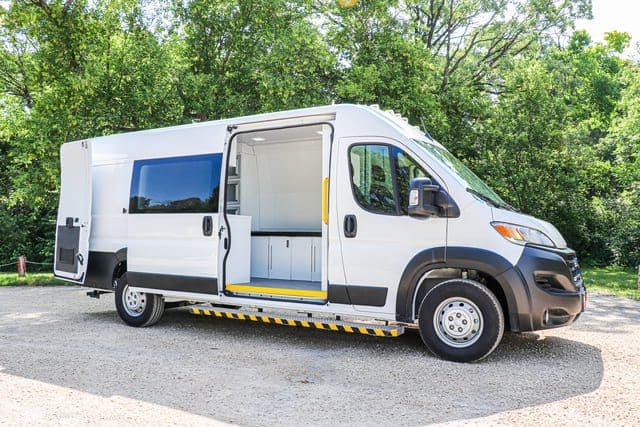
Taking your FQHC mobile can help your organization make a much bigger impact in your community. Mobile units let you serve more people by removing barriers and providing care where it’s needed most. Let’s take a look at six more benefits of going mobile.
1. You have a broader reach
Rural communities often lack nearby healthcare options. Over 60 million Americans live in these areas, many far from the nearest clinic or hospital. A mobile FQHC can fill this gap.
Benefits of reaching rural areas:
- Serve communities that don’t have local healthcare.
- Reduce travel times for patients who would otherwise drive hours.
- Build trust and relationships in areas often overlooked by healthcare systems.
2. Reach people without transportation
Transportation is a major barrier, especially in cities like Chicago. Without a car, people on the outskirts may find it hard—or impossible—to reach a clinic.
How mobile FQHCs help:
- Travel directly to underserved neighborhoods.
- Set up in areas where public transit is unreliable or unavailable.
- Meet patients at accessible locations like community centers or parks.
3. Affordability: Meet patients where they are financially
Nearly half of Americans struggle to afford healthcare. Mobile FQHCs help address this by bringing affordable, sliding-scale services to patients.
Why affordability matters:
- Patients won’t skip care because they can’t afford it.
- Mobile units can serve communities hit hardest by economic challenges.
- Offering affordable services builds trust and loyalty among patients.
With a mobile FQHC, you show people that healthcare is within closer reach.
4. Respond to emergencies and crises
Emergencies like pandemics or natural disasters often leave communities stranded without care. Mobile clinics are an essential tool in these moments.
Benefits of going mobile with your FQHC during emergencies:
- Quickly adapt to new health challenges, like testing or vaccinations.
- Provide care in disaster-hit areas with limited resources.
- Offer life-saving treatments on-site, reducing the burden on hospitals.
When your FQHC is mobile, you can react to crises quickly, ensuring your community gets the help it needs.
Expand outreach at schools and events
Mobile clinics let your FQHC connect with patients in everyday places, making healthcare more convenient.
Opportunities for outreach:
- Provide vaccinations or wellness checks at schools.
- Set up at fairs or festivals to reach larger crowds.
- Host health education sessions in community spaces.
Break down barriers with flexibility
Mobile FQHCs help you go beyond the four walls of your clinic.
Why flexibility matters:
- Adapt to your community’s changing needs.
- Provide care to diverse populations in urban, suburban, and rural areas.
- Improve health outcomes by removing location-based barriers.
What are the steps to taking your FQHC mobile?
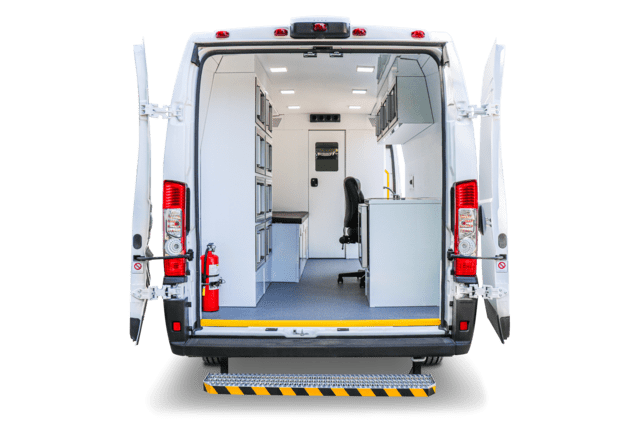
Taking your FQHC mobile might feel like a big task, but breaking it down into manageable steps makes it much easier. Here’s a glimpse of how to do it, step by step:
1. Understand the needs of your community
Before making the move, assess the healthcare gaps in your area.
- Identify rural areas or those without access to healthcare.
- Gather feedback from community members or local leaders to understand specific needs.
- Use surveys or data to pinpoint where your services would be most helpful.
2. Secure funding
Going mobile requires upfront investment, but there are options to help.
- Research federal and state grants for FQHCs.
- Seek partnerships with local businesses or community foundations.
- Consider crowdfunding or fundraising events to generate additional funds
3. Find the right mobile clinic provider
Partner with a manufacturer that understands FQHC requirements and can customize a unit for you.
- Look for a provider with experience in building mobile clinics for FQHCs.
- Choose a provider that offers customization options to fit your healthcare needs.
- Ensure the provider understands your budget and timeline.
4. Set up your mobile healthcare team
Having the right team in place is important for providing high-quality care in a mobile setting.
Here’s how to set your team up for success:
- Recruit the right staff
- Provide training for mobile care
- Assign clear roles
5. Plan logistics and operations
Once you have your team in place, it’s time to think about the day-to-day operations of your mobile unit. Here’s how to get organized:
- Plan the areas your mobile unit will serve and the schedule for visits
- Be ready to adapt to changes in patient needs or locations
- Build time in your schedule for unplanned visits or emergencies that may occur
Ready to take your FQHC mobile?
You probably came to this article because you want your FQHC to reach more people who need healthcare. Now that you’ve read through the article, you see how going mobile with your FQHC can help solve many healthcare accessibility problems.
At AVAN Mobility, our goal is to make healthcare easier to reach, and we’re here to help you do the same. If you have any questions, click the button below to talk to one of our mobility experts.
Not ready to talk just yet? Check out our other resources to learn more about how mobile healthcare can change lives.
One big question you might have is how much a mobile clinic costs. Check out the video below to learn more about that.
After that, check out our article on the top seven ways to apply for grants. This resource may give you a headstart in securing funding.
